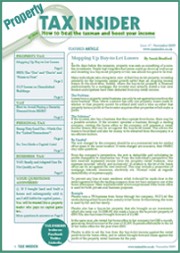Before you go, sign up to our free tax saving email course. Get 7 top property tax saving strategies in your email inbox that will help you save thousands in tax. Unsubscribe any time.
|
The winners... The revised threshold applies where completion takes place on or after This provides first-time buyers with a two-year window in which to take advantage of the higher threshold. However, it should be noted that for the higher threshold to apply, certain conditions must be met. The first is that all purchasers are first-time buyers. This means that where a property is brought jointly, the higher threshold will apply only if all the purchasers are first-time buyers. The second condition is that the purchasers must intend to live in the property as their main residence. This means that the higher threshold is not available for buy-to-let properties, even if the purchaser is a first-time buyer, although, such a purchaser could buy the property initially as a home and let it at a later date and enjoy the raised threshold. The Losers! Currently, the highest rate of SDLT payable in respect of residential property is 4% where the consideration exceeds £500,000. However, the higher rate does not take effect until next year – applying to residential purchases where the completion date is on or after This provides those thinking of purchasing a £1 million plus property a year in which to complete. Where completion takes place before
This article is from Property Tax Insider, a leading monthly UK tax magazine. Click here to slash your taxes today and get the first issue of Tax Insider for free. |


 Tax Articles
Tax Articles
